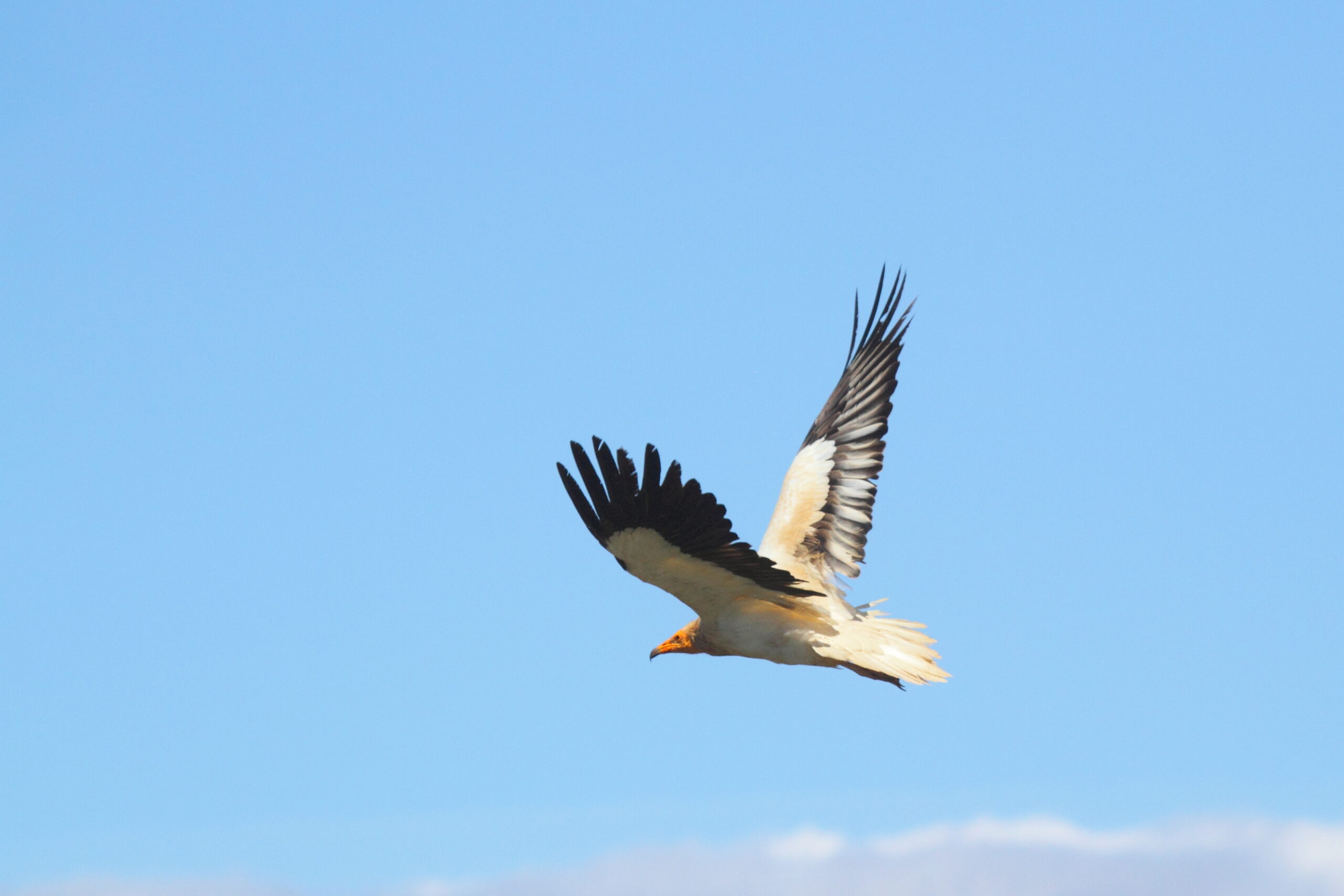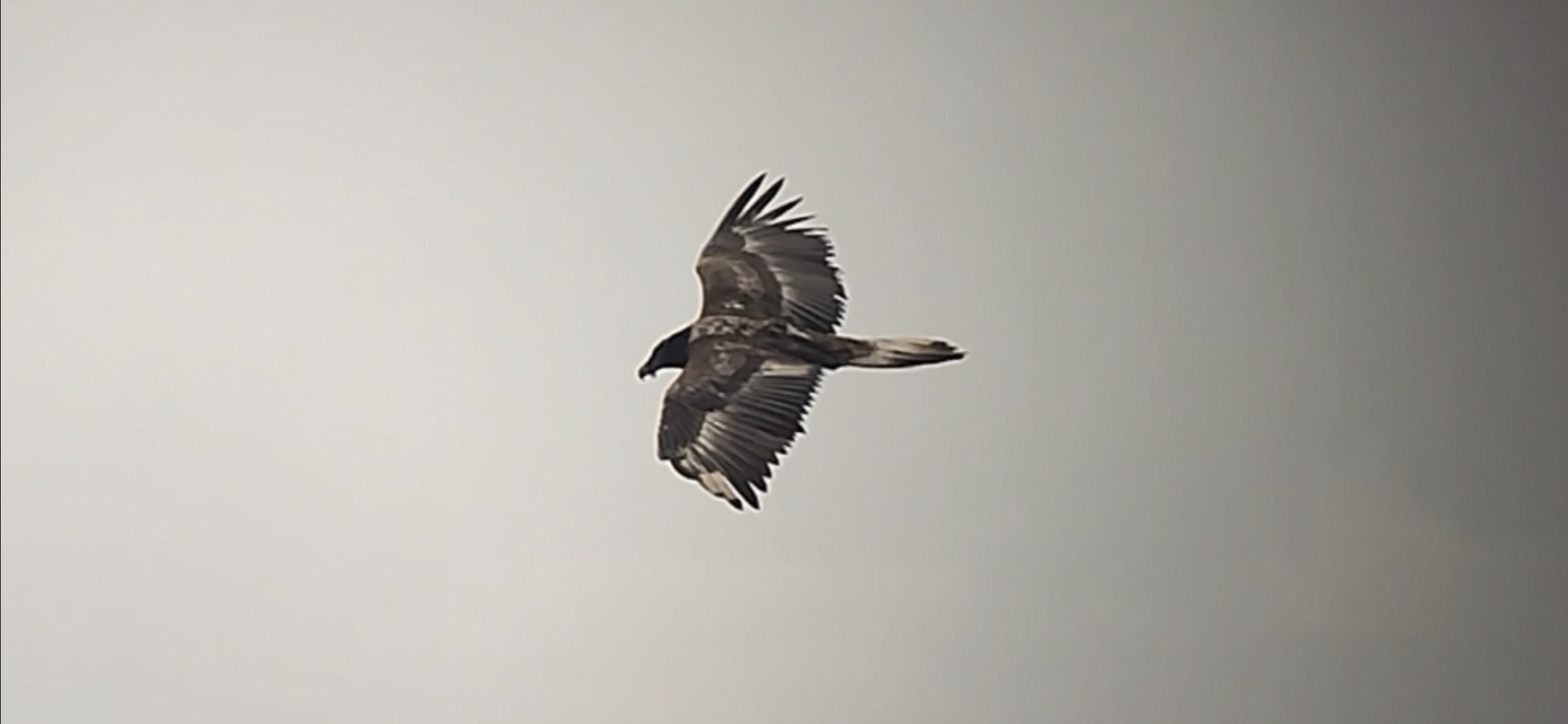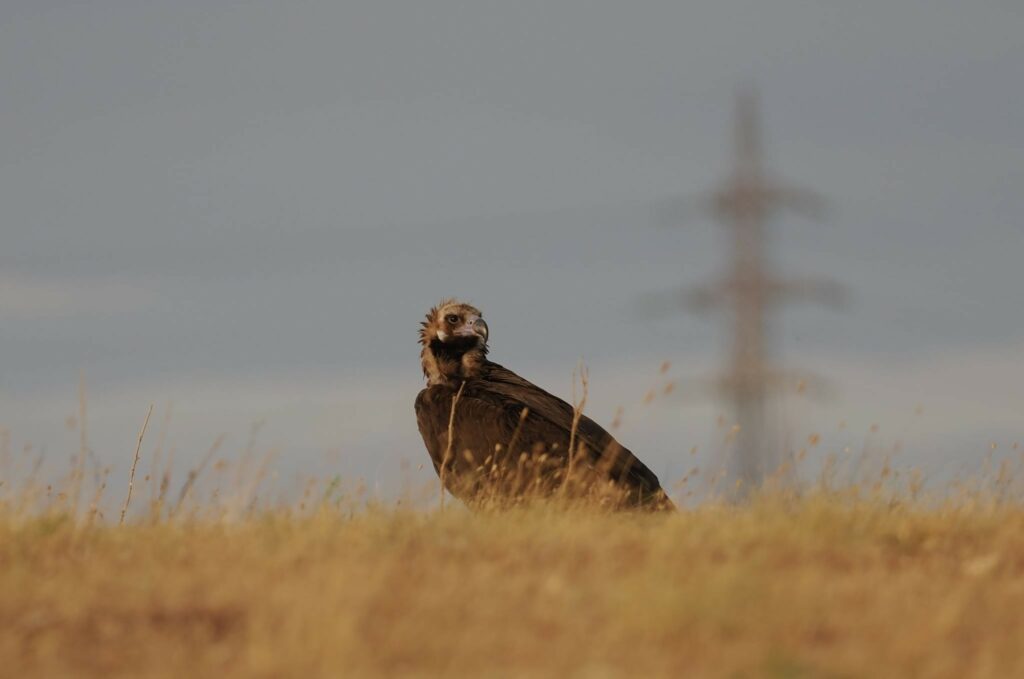
Tracking the movements and behaviour of vultures and condors by installing tracking devices can contribute both to basic and applied research and conservation, and can be incredibly valuable to help protect threatened species.
Now, the IUCN’s Vulture Specialist Group (VSG) developed and published “A practical guide to methods for attaching research devices to vultures and condors”, based on a Global Workshop where experts from around the world shared expertise by demonstrating their materials and methods through deploying real and dummy tags on real vultures. The VSG hopes that researchers studying vultures and condors will make good use of the Guide and study its recommendations carefully as there is no substitute for practical demonstration and training by experts in this field.
Benefits of using tracking devices to study vultures and condors
The majority of Old and New World Vulture species are globally threatened. Carrying out accurate scientific studies related to their conservation is essential to help preserve their vulnerable population. One of the ways to study vultures and attain concrete data is by using Platform Transmitter Terminal (PTTs), GPS-PTTs and GPS-GSM tags, which contribute both to basic and applied research and conservation. This technology can help identify and monitor threats such as poisoning, lead ammunition and NSAIDs exposure, electrocution and collision. Furthermore, through tracking, conservationists can map and manage more appropriately nesting, roosting and foraging areas of vultures and condors. Finally, data from accelerometers and other sensors can assess the speed and height of flight and the danger of collisions with energy infrastructure or other structures.
As these devices are becoming more widely available and affordable, and are performing more tasks better, a broader community of researchers are starting to use them. Still, some of these researchers will be inexperienced at the start.
To help bridge the knowledge gap, the VSG brought together research groups from five continents that have attached tracking and telemetry devices to vultures and condors using several methods and various designs and patagial tags to share expertise, discuss safety of different techniques and so, help produce a thorough Guide.
Guide for attaching devices to vultures and condors published
Saving Asia’s Vultures from Extinction (SAVE), the Raptors MoU Raptor TAG, the VSG and others had independently recognized an urgent need to identify and disseminate expertise relating to the attachment of tracking devices to vultures and condors. To address these needs, the VSG invited globally recognized experts to participate in a three-day practical workshop at the International Centre for Birds of Prey, in Newent, United Kingdom, in August 2019. There, they made detailed descriptions of the methods they use for device attachment, and shared expertise to identify, document and disseminate good practice, which resulted in the production of this Practical Guide to methods for attaching research devices to vultures and condors.
The IUCN Vulture Specialist Group

The Vulture Specialist Group is one of 140 Specialist Groups that along with a science-based network of more than 10,000 volunteer experts, Red List Authorities and Task Forces make up the International Union for the Conservation of Nature’s Species Survival Commission (SSC), dedicated to delivery of actions that conserve nature.
The Vulture Specialist Group is made up of regional co-chairs with the Vulture Conservation Foundation (VCF) Director José Tavares is co-chair of the Europe region.



